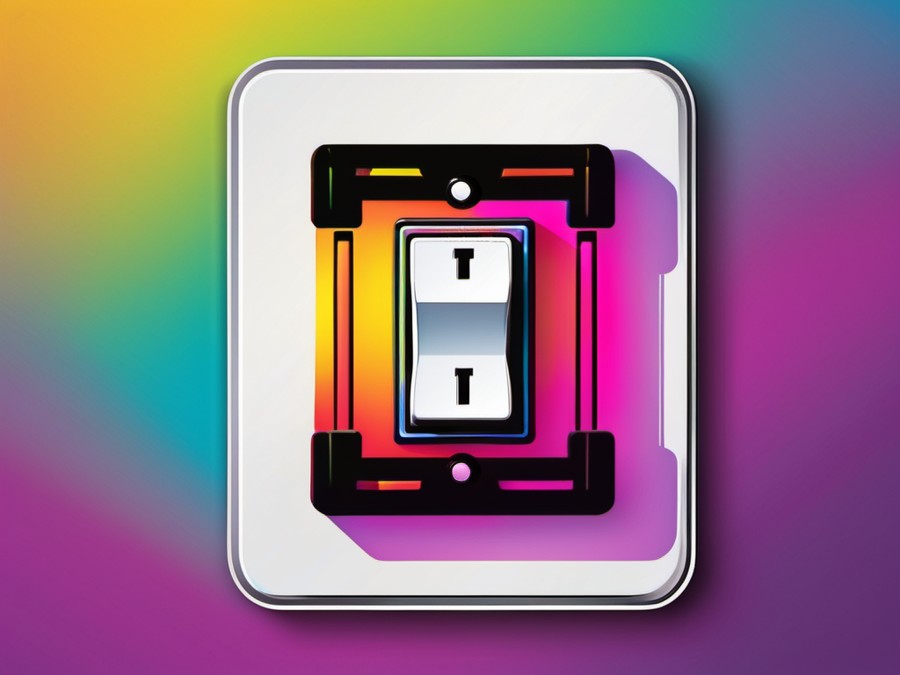· Charlotte Will · Switches · 8 min read
What is a Smart Light Switch and How Does It Work?
Discover how smart light switches revolutionize home automation. Learn about their features, benefits, and installation process in this comprehensive guide.

Lighting control has evolved significantly from the simple on/off switches of old. Welcome to the era of smart light switches, where convenience, energy efficiency, and advanced functionality converge. But what exactly is a smart light switch, and how does it work? Let’s dive in!
Understanding Traditional Light Switches:
How They Work
Traditional light switches are pretty simple devices. When you flip the switch, you close a circuit that allows electricity to flow from the power source to the light bulb, turning it on. Flip the switch back, and the circuit is broken, stopping the electricity flow and turning off the light.
Limitations of Traditional Switches
While effective, traditional switches have their drawbacks. They lack flexibility and the ability to integrate with other smart home devices. Plus, you have to physically be there to turn them on or off—not ideal for busy modern lifestyles.
The Evolution to Smart Light Switches:
What Makes Them “Smart”?
Smart light switches take basic functionality and elevate it to new heights. They’re not just about turning lights on and off; they connect to your home network, giving you remote control via a smartphone app or voice commands.
Key Features and Benefits
- Remote Access: Turn lights on or off from anywhere.
- Scheduling: Set timers to automate lighting.
- Voice Control: Integration with voice assistants like Amazon Alexa or Google Home.
- Energy Efficiency: Reduce power consumption by automatically turning off lights when not in use.
How Smart Light Switches Work:
Components and Main Parts
- Microcontroller: The brain of the smart switch, handling all the processing.
- Wireless Communication Module: Enables Wi-Fi, Zigbee, or Z-Wave connectivity.
- Power Supply Unit: Provides the necessary voltage to run the switch.
The Mechanism Behind the Scenes
When you turn on a smart light switch, it not only closes the circuit to power the bulb but also sends a signal through its wireless communication module to your home network. This allows you to control the switch remotely via an app or voice commands, and for automation features like scheduling to function.
Integrating Smart Light Switches into Your Home:
Installation Process
Installing a smart light switch is quite straightforward, but it involves some basic electrical work. You’ll need the following tools:
- Screwdriver (phillips head)
- Wire stripper/cutter
- Voltage tester
- Faceplate screws
Here’s a simple step-by-step guide:
- Turn Off the Power: Safety first! Locate your circuit breaker and turn off the power to the switch you’re replacing.
- Remove the Old Switch: Unscrew and remove the old switch from its junction box.
- Identify Wires: You’ll typically see black (hot), white (neutral), and green/bare (ground) wires.
- Connect the Smart Switch: Follow the manufacturer’s instructions to connect the wires to your new smart switch.
- Secure and Test: Secure the switch back into its junction box, turn on the power, and test your new smart switch.
Connecting to Your Smart Home Ecosystem
Once installed, you’ll want to connect your smart switch to your home network. This usually involves downloading a mobile app, following the setup instructions (like scanning a QR code), and connecting it to your Wi-Fi network.
Exploring Different Types of Smart Light Switches:
Wi-Fi Connected Switches
Advantages and Limitations
- Pros: Easy to set up, no need for a hub.
- Cons: Can be slow or unresponsive if Wi-Fi signal is weak.
Zigbee or Z-Wave Switches
Ideal Use Cases and Compatibility
- Pros: More reliable due to dedicated mesh networks, lower latency.
- Cons: Require a hub and can be more complex to set up.
Neutral Wire vs. No Neutral Wire Switches
Some smart switches require a neutral wire for power; others don’t. Ensure you choose the right type for your wiring setup to avoid complications during installation.
Unlocking the Full Potential of Smart Light Switches:
Voice Control Integration
Setting up voice commands is a game-changer. You can say “Alexa, turn on the living room lights” and watch as they brighten up the space. Most smart switches are compatible with popular voice assistants, making your home smarter and more convenient.
Scheduling and Automation
One of the best features of smart light switches is their ability to set schedules. For example, you can program the lights in your bedroom to turn on 15 minutes before you wake up, creating a gentle morning routine. Or set them to turn off automatically at night if you forget.
Creating custom lighting scenes adds another layer of convenience. For example, a “movie night” scene could dim the lights and turn on your TV.
Smart Light Switches vs. Traditional Dimmer Switches:
Key Differences
- Flexibility and Control Options: Smart switches offer more versatility, including remote control and automation features, whereas traditional dimmers are primarily for adjusting light intensity.
- Integration Capabilities: Smart switches can integrate with other smart home devices, while dimmers are standalone.
When to Use Each Type
Use a traditional dimmer if you simply want to adjust the brightness of your lights. Opt for a smart switch when you’re looking for advanced features like remote access and automation.
Energy Efficiency and Cost Savings:
How Smart Light Switches Help Reduce Energy Bills
Smart light switches can significantly reduce your energy consumption. By allowing you to turn off lights remotely, schedule lighting according to your presence, and use motion sensors to avoid leaving lights on unnecessarily, you can save a substantial amount of money over time.
Real-World Examples of Savings
Imagine you’ve just left for work but realized you forgot to turn off the kitchen lights. With a smart switch, you can simply open your app and turn them off remotely, avoiding unnecessary energy waste. Over months and years, these small savings add up to substantial cost reductions.
Enhancing Security with Smart Light Switches:
Motion Sensing and Automatic Lighting
Many smart light switches come with built-in motion sensors. These can automatically turn on the lights if they detect movement, which is great for security and convenience.
Remote Access for Peace of Mind
One of the biggest benefits of smart light switches is being able to control your lights remotely. If you’re on vacation and want to make it look like someone is home, you can turn lights on and off from your phone to deter potential burglars.
Common Misconceptions About Smart Light Switches:
Myth: They Are Difficult to Install
This isn’t true for most modern smart switches. Many are designed for easy DIY installation and come with clear instructions. However, if you’re not comfortable with basic electrical work, it’s always best to consult a professional.
Myth: Smart Switches Only Work with Certain Brands of Bulbs
While some advanced features might require specific bulb types, most smart switches work with a wide range of bulbs, including LED, incandescent, and CFL. Always check the specifications before purchasing to ensure compatibility.
Troubleshooting Tips for Smart Light Switches:
Solving Common Issues
- Connection Problems: Ensure your switch is properly connected to your Wi-Fi network. Sometimes a simple reboot of the router can resolve connection issues.
- Light Flickering: This could be due to a loose wire or a faulty bulb. Double-check all connections and try replacing the bulb to see if that resolves the issue.
Maintaining Optimal Performance
Regularly update your switches’ firmware to ensure you have the latest features and security patches. Keeping your smart home app up-to-date is also crucial for maintaining optimal performance and compatibility.
The Future of Smart Light Switches:
Emerging Technologies and Trends
- AI Integration: Future smart switches could use AI to learn your routines and make automatic adjustments.
- Enhanced Security Features: Expect to see more advanced security features, such as automatic alerts if unusual activity is detected.
Choosing the Right Smart Light Switch for Your Needs:
Considerations and Factors to Keep in Mind
- Compatibility with Existing Devices: Make sure your new switch is compatible with other smart home devices you already have.
- Budget and Features: Consider what features are most important to you. Basic models may be cheaper but lack advanced features like motion sensing or voice control.
Conclusion:
Smart light switches represent a significant leap forward in home automation, offering unparalleled convenience, energy efficiency, and security. By understanding how they work and integrating them into your daily life, you can transform the way you interact with your home environment. From scheduling lights to turn on as you arrive to voice-controlled dimming, the possibilities are vast. Embrace the future of lighting and enjoy a smarter, more connected home experience.
FAQs
Can I install a smart light switch myself? Yes, many smart light switches are designed for easy DIY installation. However, if you’re not comfortable with electrical work, it’s always best to consult a professional.
Will my smart light switch work with all types of bulbs? Most smart switches are compatible with a wide range of bulb types, including LED, incandescent, and CFL. It’s always a good idea to check the specifications before purchasing.
Can I use a smart light switch without a neutral wire? Yes, some models are designed to work without a neutral wire. Look for switches that explicitly state they don’t require a neutral wire.
How do smart light switches impact my electricity bill? Smart light switches can help reduce your bill by allowing you to turn off lights remotely, schedule lighting according to your presence, and use motion sensors to avoid leaving lights on unnecessarily.
What happens if my Wi-Fi goes out? In the event of a Wi-Fi outage, your smart light switch should continue to function as a regular light switch. However, you won’t be able to control it remotely until the connection is restored.
For a deeper dive into smart home technologies, explore our articles on What is smart lighting and how does it work? and What is a Smart Home Hub and How Does it Work?.




